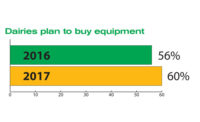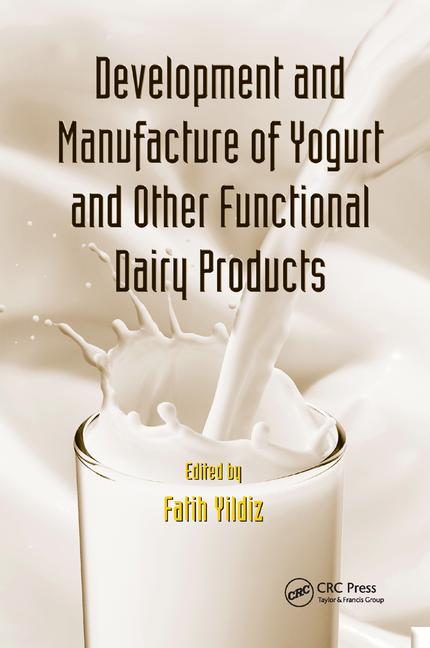Logistics equipment keeps up with packaging trends
As dairies use more flexible packages, the equipment that handles cases and pallets might have to change. We asked two executives how plant managers can make their operations more efficient.

Introduced earlier this year for users of flexible packages, Schneider Packaging Equipment Co.’s new system efficiently rejects packages from multiple lines without causing product interruption in adjacent lanes. Rejected items are ejected downward through an opening in the conveyor belt itself, eliminating the need for a right-angle reject lane or manual removal even on multilane applications. The system is designed to work with any inspection technology including vision, check weighing, metal detection, X-ray and seal checking.

Containers that get skewed during bulk depalletizing must be reoriented before moving downstream. The single-filing module for the Model 108 depalletizer from A-B-C Packaging maintains container/handle orientation as bottles or jugs are transferred from the bulk transfer table to the bottle conveyor. The bulk depalletizer is available for low or high level operation, and can run loads to 110 inches high.

A vertical z-style conveyor from Dynamic Conveyor is said to reduce the cost of ownership by offering a design that is easier to clean than bucket conveyors. Easier cleaning and sanitizing result in shorter downtimes. The vertical Z is custom-designed to a dairy’s desired height and includes widths up to 24 inches.



When Dairy Foods surveyed its readers, we found that 35% of dairies plan to purchase new conveyors or palletizers. In the same study, dairy processors also reported they are increasing their use of plastics and flexible packaging (such as pouches) and using less metal and glass.
To find out how the increased use of flexible packaging (commonly used by cheesemakers) might affect how a dairy buys and specifies new conveyors or palletizers, we asked some equipment suppliers. Barry Rinaldi, the director of business development for Schneider Packaging Equipment, told us that it is not enough for equipment to be easy to operate and maintain.
“Conveyors and palletizing equipment need to be equipped with fast or automated abilities to orient and pack or reject product,” he said. “Conveyor systems need to be able to quickly orient pouches and flexible packages on the fly in an efficient manner so that they do not inadvertently shingle or backup on the conveyor.”
Milk in flexible, rigid packages
Fluid milk processors use a variety of rigid and flexible packaging. They create formats ranging from half-pints to gallons (and even larger), and deliver these containers in milk crates, corrugated boxes, bossey carts or caseless pallets. We wanted to know how a dairy can use conveyors and palletizers most efficiently to meet these various formats and customer needs.
“How quickly and reliably you can changeover, directly affects OEE [overall equipment effectiveness],” Rinaldi said. “Robotic palletizing gives the most flexibility for quick changeovers.”
With a push of a button, the palletizer is ready to pack different case sizes, he said. Robotic equipment also allows palletizing to be centralized, combining multiple production lines into one palletizing cell. Centralized robotic palletizing equipment has the ability to keep product types separate so that more than one product can be palletized in the same cell at the same time while keeping the unit loads separate, he said.
President Fred Beer of Westfalia Deam Systems said milk processors should try and standardize on package conveyor and palletizer types because this reduces spare parts inventory, and standardizes maintenance procedures.
“Typically, fluid milk products are packed in plastic crates which are then stacked and 9-stack palletized for distribution,” he said.
New product development and extended shelf life packaging is changing the landscape somewhat, and fluid milk dairies are having to adapt to corrugated cases and related materials handling equipment.
Beer said flexibility is “key” when making new equipment purchase decisions.
“Case packers need to be capable of loading corrugated cases as well as the traditional plastic crates. Conveyors need to be capable of handling both case types. Palletizers capable of palletizing different case types in various layer configurations are required and are typically robotic type,” he said.
Robots with smaller footprints
Robots are not widely used in food processing, partly because the machines are not built to withstand the harsh washdown conditions found in dairy plants. (See 3-A Today) However, robotic palletizers are commonly used, and plant managers love that these machines don’t get sick or file workman’s comp claims. We wondered about the next innovation in dairy plant automation as it relates to logistics.
Schneider Packaging Equipment is designing robotic case packing and palletizing equipment to have the smallest footprint possible, freeing up valuable plant automation floor space, Rinaldi said. The company is also leveraging the improved integration between upstream and downstream equipment to increase OEE and energy savings. For example, when a product run stops, for any length of time, the equipment goes into energy-savings mode.
Beer of Westfalia said “the next big change” in dairy plant automation as it relates to logistics will be in cooler/warehouse operations.
“Clamp trucks and fork trucks with rack storage and a series of drag chain conveyors feeding load-out palletizers result in many coolers being inefficient with poor space utilization,” he said. “Technology is available to store, retrieve, sort and pick products automatically as well as track inventory in real time. An increase in the use of available technology to automate dairy coolers/warehouses will be a trend in the next 1-3 years.”
Find more suppliers of conveyors and palletizers in the Dairy Foods Buyers Guide and at PackExpo, Nov. 2 to 5, Chicago.
Looking for a reprint of this article?
From high-res PDFs to custom plaques, order your copy today!











